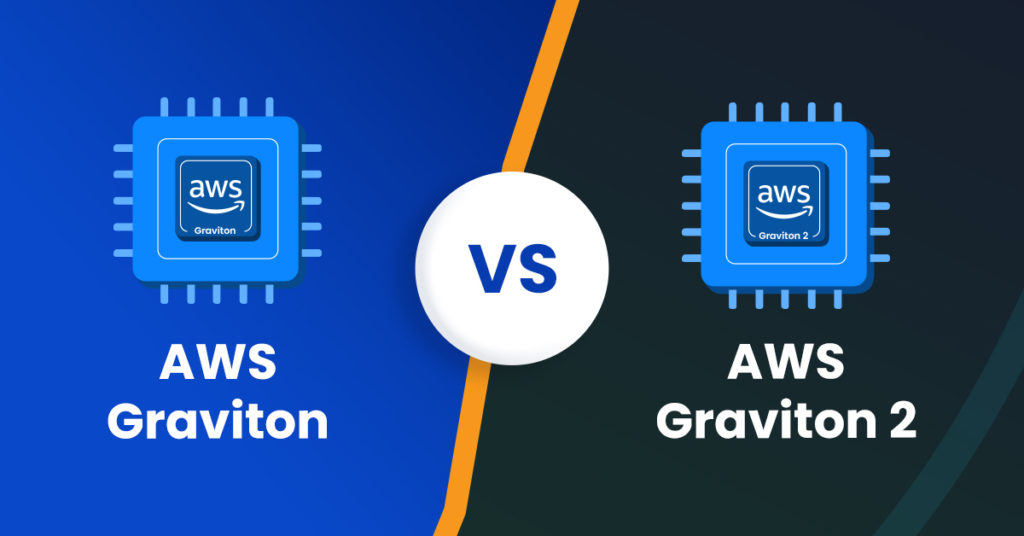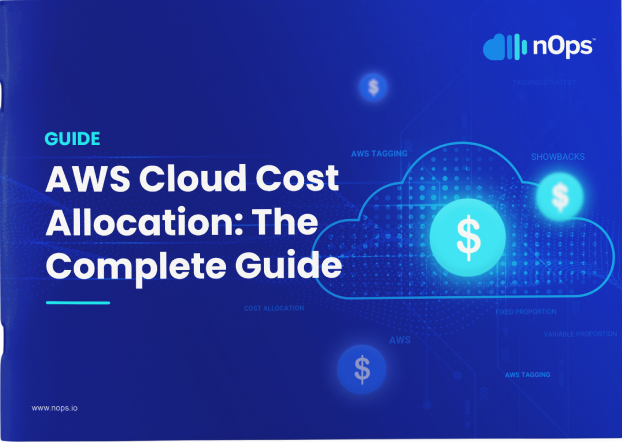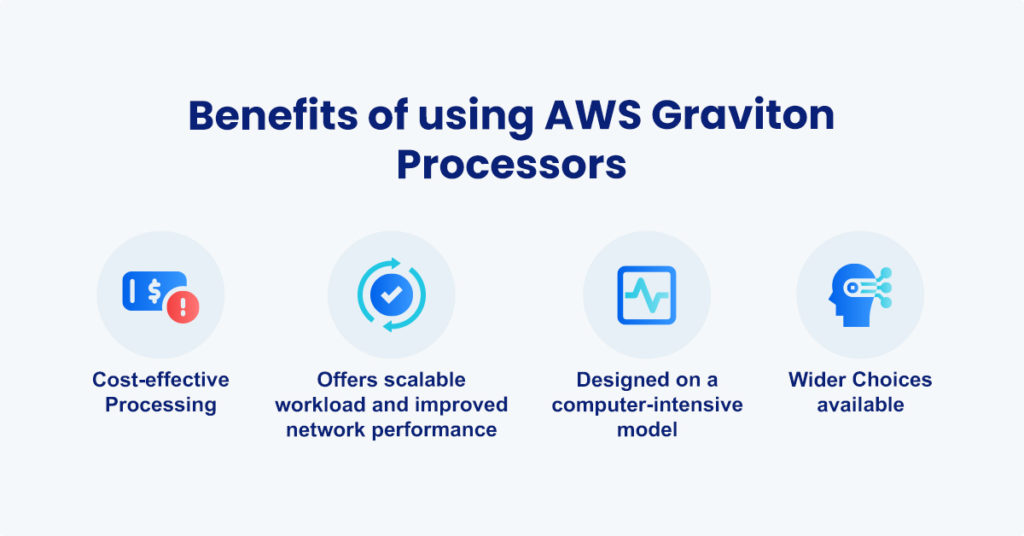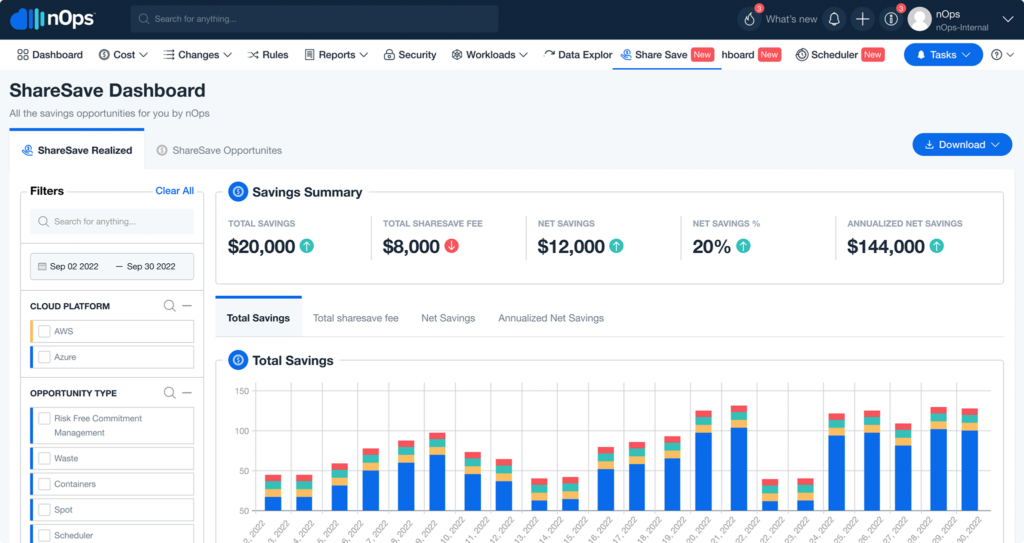AWS Graviton: Basics, benefits, and processing
Amongst the most potent launches, AWS Graviton Processors were launched in 2018. At the launch event, the AWS team conveyed three significant objectives for the release, i.e., offering additional alternatives for EC2 instance users, Processor being supportive of Arm-based applications, and boosting performance hits while reducing virtualization costs. Since then, there has been quite a hype for and against the Graviton Processors. So let’s explore these processors and when to use them efficiently.
Understanding AWS Graviton
AWS Graviton processors are Arm architecture-based server processors that Amazon Web Services specifically designed using 64-bit Arm Neoverse cores to provide the highest price performance and scalability with minimal latency and cost. In addition, an already-existing Arm architecture was assessed and optimally modified for AWS EC2 instances.
They offer seven times as much performance, four times as many computing cores, five times as much memory, and two times larger caches. Custom silicon and 64-bit Neoverse cores were primary features of the first-generation AWS Graviton processors. The fact that EC2 A1 instances support Arm-based applications, including web servers, cache fleets, remote data centers, and containerized microservices, is one of the central topics of focus.
AWS Graviton V/S Graviton 2
AWS offered Graviton 2, which is supposed to serve a 40% improvement in price performance and enhanced security. Here’s how both differ in practical terms:

- 40% improved Performance
With their instances, AWS Graviton2 processors offer a considerable improvement, providing 40% higher performance at a 20% cheaper cost for various workloads. This is primarily because, unlike generation 1, Graviton2 is not just limited to EC2 instances but also empowers Amazon ElastiCache, Amazon RDS, and Amazon EKS (container services).
- Data Storage:
Hosting web services like images and videos and analytical data are made more accessible by the specific object-level data storage services provided by AWS Graviton. In contrast, Graviton2 provides block-level storage, which enables the storage of files at various values, often referred to as blocks. Blocks additionally safeguard data by preventing simple remote internet connection accessibility to it. Primary features include software testing, a NoSQL database, and business continuity.
AWS Cloud Cost Allocation: The Complete Guide

- Durability
While Graviton2 only saves data in one availability zone, AWS Graviton adds persistence by storing data across multiple availability zones. Thus, Graviton offers a compatible version for users looking for availability zones and durability.
- Access to information
Data is easily accessible since AWS Graviton stores data in such an unclustered manner. The data can be retrieved using the HTTP protocol. In contrast, Graviton2 stores the information in a format only available through the connected device.
- Less Energy Consumption
The AWS Graviton2 Arm-based processors use less energy and produce less carbon dioxide than their x86-based counterparts. Thus, the graviton instance type promotes greener and environmentally sustainable cloud computing.
Benefits of using AWS Graviton Processors

Here’s how Gravitons are definitely a better alternative:
- Cost-effective Processing
Arm architecture serves as the foundation for the processor family, i.e., promoting System on a Chip (SoC). This further correlates to decreased power consumption expenses while providing most customers satisfactory performance.
- Offers scalable workload and improved network performance
They provide consumers with a wide range of services for handling burstable workloads, including virtual desktops, small and medium database servers, scale microservices, and several apps appropriate for mission-critical operations.
- Designed on a computer-intensive model
Additionally, the processors are designed for computer-intensive tasks, including HD video computational power, video encoding, gaming, and CPU-based computer learning.
- Wider Choices available
AWS The 64-bit Arm Neoverse core architecture serves as the foundation for Graviton and Graviton 2. In addition, the setup is supported by several operating systems built on Linux, including Red Hat, SUSE, and Amazon Linux 2. Customers now have additional options thanks to this.
How nOps can help with AWS Graviton Processors
Given the wonderful benefits that AWS Graviton Processors offer, it is quite evident that you must have been thinking about switching to Graviton Processing as well. Well, it is the right decision for sure. But before proceeding, make sure you understand how your cloud computing needs change daily and night. The first step in choosing the optimum infrastructure is understanding your cloud spending and determining precisely what impacts and how. You should understand the monthly cost of your AWS bill and the how or why in the absence of genuine cost awareness. This is where nOps Cloud Cost Optimization enters for optimizing AWS graviton processors.

With our ShareSave solution, you can consolidate AWS cloud accounts into a single pricing model and offer ongoing visibility to change requests. As a result, you can know which AWS services cost you the most and why. This helps you efficiently manage cloud costs and examine everything from the big picture to the specific components that drive your cloud spending. Plus, with nOps Cloud Cost Optimization, you can save more by centralizing cloud accounts into a consolidated billing model, providing instant and continuous visibility to change requests and delta to your infrastructure that cause cost, and giving you the best root cause analysis capabilities available anywhere.






